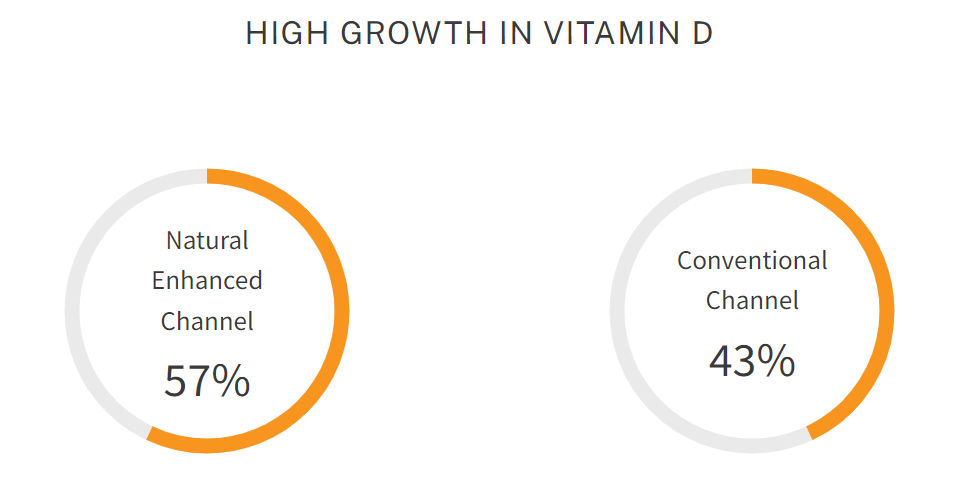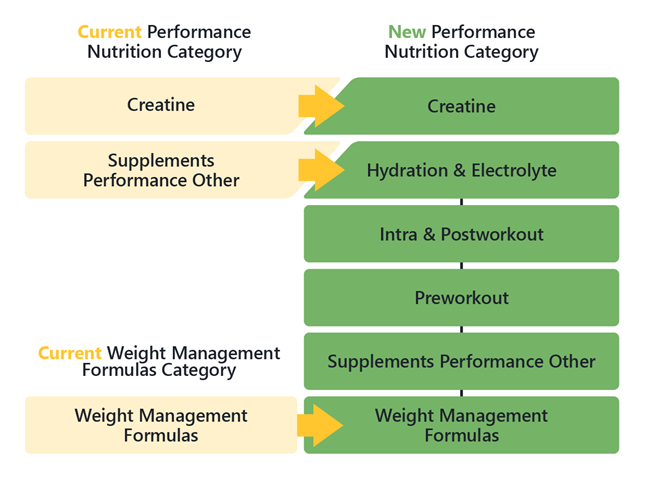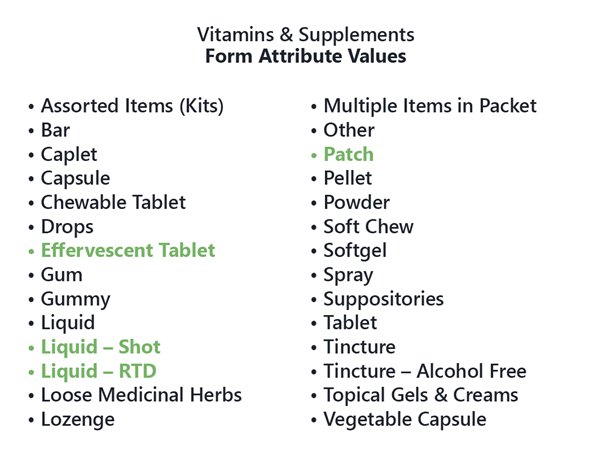Understanding the Complete View of the Market
The majority of American adults take vitamins and supplements, according to the CDC. Those findings don’t consider the effects that COVID had on shopping habits and health concerns. SPINS Product Intelligence data shows that over the last year, as shoppers wanted to stay as health as possible and avoid the doctor’s visits, vitamins and supplements with a focus on performance nutrition ingredient attributes experienced tremendous growth.
Functional Ingredients on the Rise for Boosting Immunity
Ingredients that provide a boost to the immune system and overall well-being continue to grow thanks to a focus on immunity. Mushrooms (known for their many health benefits) are up 2% in performance nutrition supplements, and even pet products with CBD have seen a 22% bump.
Separately, over a 12-week stretch, vitamins, minerals, and supplements grew 2% in natural outlets and 32% in conventional retailers vs a year ago. In comparison, Vitamin D saw an impressive 57% growth in natural outlets and 43% in conventional.

As the category expands and shoppers continue to rely on these products to boost their daily nutrition, SPINS can help brands and retailers get a more detailed and accurate look.
Here are the ways our Product Intelligence library provides you the information you need to differentiate yourself, stay competitive, and stay informed when it comes to vitamins and supplements.
Keep Track of Ingredient Attributes
Shoppers seek out or avoid certain ingredients for a variety of reasons, ranging from personal health concerns to nutritional benefits to dietary restrictions. When they pick up a product from a shelf, they look at the side panel to see if the ingredients they do or don’t want are listed. SPINS tracks ingredient attributes that provide a more holistic view of what is (and isn’t) inside of each vitamin and supplement: super fruits, super greens, super mushrooms, nootropics, adaptogens, and nervines.
What is an “ingredient attribute?”
Ingredient attributes itemize a product’s ingredients looking at all the information on a product’s packaging, not just in ingredients list. The ingredient attribute takes information from the nutritional facts panel, the ingredients statement (list), and the allergen statement.
Understand Condition-Specific Supplement Formulas and a Health Focus
Condition-specific supplement formulas represent formulations that are marketed and/or intended for a specific health condition. For example, supplements addressing sleep or energy needs fall under the condition-specific supplement formula category. With SPINS, you can dig deeper for a look at probiotics or essential fatty acids because they are their own subcategory.
This separation allows you to see what’s happening on store shelves from multiple angles. Last year we saw an uptick in shoppers focusing on immunity as COVID took its toll, and they reached for vitamins and supplements as a result. With this new category and subcategory arrangement, you can see whether they’re flocking to zinc supplements specifically or to supplements with immunity formulations that contain zinc.
Health-focus attributes take a similar approach in describing what the products address, not just what is in them. You can track performance, hangover remedies, and hydration—resulting in a total of 28 health focus attributes in the SPINS Product Intelligence library.
SPINS' Subcategories for Performance Nutrition
Performance nutrition includes products that seek to improve or address specific needs for physical activity. Subcategories within performance nutrition allow for a granular look at the products made for these activities and needs, including hydration and electrolyte, intra- and post-workout, pre-workout, supplements and performance (other), and weight management formulas.
By combining products and brands into the hydration and electrolyte subcategory, you now have a more accurate view of how retailers are grouping these items on shelves. Today, many of these products sit within shelf stable drink mixes under the food and beverage category, but now they can be recognized for their own increasing popularity.

SPINS' Form and Pack Count Attributes
Another way the new SPINS attributes reflect the evolving vitamins and supplements aisles is with our growing form attributes. Form attributes prove how innovative supplement manufacturers have become and how eagerly shoppers are responding. With SPINS, you can look specifically at attributes like effervescent tablet, patch, liquid shot, and liquid ready-to-drink—which add up to 25 total form attributes in the SPINS Product Intelligence Library. Similarly, pack count attribute reflects what shoppers see in stores. All subcategories within vitamins and supplements include pack counts, whether that’s 10 packets in a box of Vitamin C powder supplements or 2 bottles of magnesium in a bundled combo pack.
What is a form attribute?
A form attribute identifies the way in which a product is consumed by customers. Ex: capsules, gummy, powder.

Stay Ahead of Vitamins and Supplements
With these changes, you can track products with the same level of detail shoppers bring to the aisles. To find out what other exciting changes are happening within vitamins and supplements, or to see how SPINS can help you stay ahead, contact us today.





